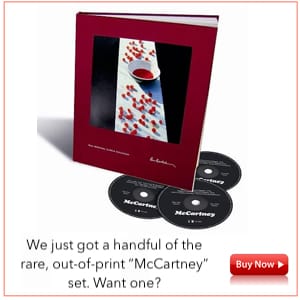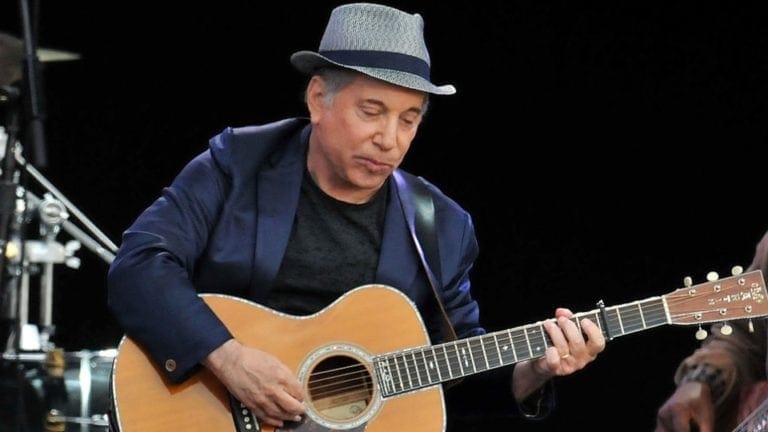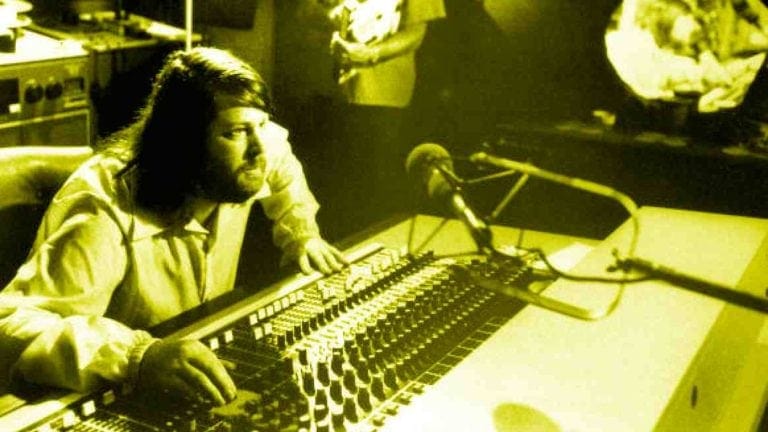Follow us
Beatles, Abbey Road: Feb. 11, 1963

The following is an excerpt from Shivering Inside, part of Jude Southerland Kessler’s four-volume “historical narrative” series about John Lennon.
10 a.m….12 hours, 45 minutes to go
They’d come in by what Paul referred to as “the tradesman’s entrance” over a half hour ago. Parlophone’s scurrying porters had assisted Neil in carrying in the groups’ equipment and had helped the boys top the studio piano with tissues, a tray of tea essentials, packets of Peter Stuyvesant cigs, a tin of Zubes for John, and a tin of Hacks for Paul.
Norman Smith, who was serving as First Engineer for the day’s venture, had placed the mics several feet away from The Beatles’ speakers – rather than the traditional “close up and personal” position – to create the aura of a live recording, to fashion a concert effect inside Parlophone’s clinical walls.
George Martin had initially desired to transport “the whole kit and caboodle” up to Liverpool for a live recording in The Cavern, but a logistical examination of the club’s drippy walls, maniacal crowds, and refractive stone ceilings had nixed the idea. Assured by Smith and Second Engineer, Richard Langham, that they could create, within Studio Two, “the veritable essence of a live show,” Martin had relented. But he was adamant about making this album something more than a “shameless catchpenny device” – a hurried piggyback off The Beatles’ Number One single. He wanted to make it unique.
Now, Smith was busy planting the Liverpool lads in position. “All right, George, you’re here.” He stationed the boy. “Directly in front of Ringo. Right. Yes, good.” Norman stepped back and looked at Starr on the elevated podium with Harrison just beneath. Perfect. “And John, Paul, you both stand here together. This is your mic.” He manouvered them in tightly as well. It was the ideal arrangement to produce a concert resonance.
Young Richard Langham made his way towards the group, his striped silk tie knotted tightly, his smile, genuine.
“Oh, hello, Richard,” Norman patted him on the back. “Meet Paul McCartney and John Lennon. And over there, George Harrison. And in the back, Ringo Starr.”
“Hello there,” Richard shook hands with the three he could reach. He waved to Ringo and offered a wide grin.
“I hope y’have those names committed to memory, son!” John teased, and Richard, blushing a bit, wasn’t quite sure that he did. But he made a mental note to ask Norman to review them, once upstairs. He’d never let the boys guess he wasn’t one hundred per cent. Efficiency was Langham’s strong suit.
“Richard’s Second Engineer for the day…and the night,” Norman explained. “He’ll manage the tape.”
“Great. See that y’do.” It was Lennon again. Richard chuckled lightly, promising to do just that, and hurtling up the twenty wooden stairs to the control room, he left Norman to finalize the details.
“Good morning, Richard.” It was George Martin, on his way downstairs for instructions. “I assume you met The Beatles, eh?”
“All four of them,” Langham smiled. “Well, I hope your slate’s clean for this afternoon and evening,” Martin glanced at his watch, “because we’ve quite a lot to do and not enough time to do it.”
“I’m here for the duration, George,” Langham said. All of them were. It was going to be quite a day.
Related: “The Cavern Club: Wednesday, Aug. 7, 1957”
10:08 a.m….12 hours, 37 minutes to go
“Well, looks as if you’re all set.” Martin clasped his hands and eyed the equipment and the group. “And that’s a good thing, because we’ve an ungodly amount of work to do.” He took a breath. “Fortunately, four of your songs are already in the can… ‘Love Me Do,” ‘P.S. I Love You,’ ‘Ask Me Why,’ and the hit for which the LP will be named, ‘Please Please Me.’”
“Good,” Paul gave a quick sideways nod of the head, and Martin smiled a little. He wasn’t yet accustomed to the amount of patter that the Northern boys felt free to contribute.
“So,” Martin went on, “we’ll need ten other songs today, before all’s said and done – ten songs that will tell the public exactly who you are. I mentioned to Brian, and I’m sure he conveyed to you, that I’d like you to be an integral part in deciding which songs we select, but we need to do that very quickly. We’ve both time and budget restrictions, you understand. That being said,” he glanced at the clock, “what do you have that we can record quickly?”
“Well,” John rasped, “we’ve four new originals. And we’ve our stage act, as it were. I mean, it’s been rather well-rehearsed, hasn’t it…for two-and-a-half years now.”
Martin smiled. “All right, then.” The producer folded his arms. “This is what I’d like you to do. Just play something first. Anything…perhaps your show opener.”
“‘Some Other Guy,’” John said. “Yes, just play that,” Martin nodded, “and we’ll get a sound check. Then we’ll launch into new material – your original songs first, of course – while you’re still fresh.”
“Can do.” Paul looked to the others for confirmation. They nodded assent.
10:15 a.m….12 hours, 30 minutes to go
It was a quick run-through, so rapid they hardly remembered it. But above them, Norman Smith was tweaking this and that, making certain that each voice was balanced, each instrument clear.
“The bass seems a bit lost,” Martin commented, his brow furrowed. Smith made a few adjustments, and they listened once again.
“Better,” Smith commented. “And all the voices are evenly showcased now.”
“Yes, but Harrison’s heavy Scouse tends to outweigh the others,” Martin observed. “I can hear him above the rest. We’ll have to watch that on a case by case basis.”
Smith nodded. Then: “Ready, Richard?” he asked the young man, a Rock Hudson look-alike, who manned the reel-to-reel.
“Absolutely,” Langham nodded. It was the Second Engineer’s role to do his job, agree, and nothing else. It was an EMI tradition, and Martin liked it that way.
“Well,” Smith stood and glanced at the room below, “the boys are finishing their tea, so if there’s nothing else, I think we can begin.”
George Martin adjusted his thinly-striped, silk tie and tightened the knot. “All right,” he agreed, standing, a captain at the helm. “I’ve assured EMI – who is not convinced that ‘these berks’ warrant an LP – that with one moderate success and one Number One under their belts, The Beatles are worth the £400 and 12 hours we’re about to spend on them. Let’s make me right, gentlemen,” Martin smiled. “Right and justified.”
And they got to work.
Related: “The John Lennon Series with Jude Southerland Kessler”
10:20 a.m. – 12 hours, 25 minutes to go
“You can’t get the atmosphere of the crowd stompin’ on the beat along with you here!” John was grousing when the announcement from above signaled them to begin. Leaning against the rear wall of the barn-like room, Neil Aspinall smiled in anticipation. Thin, attractive – sometimes mistaken for George Harrison – Aspinall was chuffed to be part of the group. He’d completely forgotten any row he’d had with The Beatles over Pete’s departure. In this moment, he was goose-fleshed at how far they all had come in such a short time.
When, last August, Pete had advised Neil to remain with the band because “they were goin’ places,” Best had been right on target. The Beatles, Neil thought, were predestined. He could feel it all around him this morning.
Neil knew the secret George Martin had surmised weeks ago: The Beatles worked best under pressure. Having only one day to record an entire LP of songs, the boys would “turn to” and produce. They would see the deadline as a challenge.
Though an LP wasn’t nearly as important to fans as a 45 or a 78- rpm disc, record store owners used the glossy LP covers to decorate their stores, to serve as posters of the most popular bands. LP’s gave pop stars a persona, an aura: teens who wandered in to purchase singles could see the band leering at them from shiny cardboard covers.
But right now, the LP cover was the last thing on anyone’s mind. If the record fared poorly, then the photograph wouldn’t matter a bit. It was the music that had everyone’s attention.
“All right, which of your originals would you like to record first?” Martin’s eloquent voice asked over the loudspeaker.
“‘There’s a Place,’” John answered, straight away. “One moment,” Martin paused. Then: “When you’re ready…” And John was. He began the song with a sandpaper rasp. In fact, his throat threatened to choke the word, “Theeeeere’s” to death. But once hurdled and once Paul joined him in a duet that failed to distinguish between their two beautifully blended voices, the song stood firmly on its own two feet.530 On the second take, John emotionally offered, “In my mind there’s no sorrow,” and Paul responded, “Doncha know that it’s so?” But George, unfortunately, warbled, “Doncha know that it’s true?” and the recording halted in midstream.
Third try: John’s harmonica said it all. Not the brisk, up-tempo instrument of “Love Me Do,” John’s Hofner harmonica was eloquently plaintive. It wept. But this time, the bass and drums failed to echo one another, and Martin ended the attempt with two terse words: “And again.”
Fourth take. The beginning “theeeere’s” was strong…a powerful intro, full of conviction. But when John sang, “And it’s my mi-ii- iiiind,” Paul offered, “And in my mi-ii-iind.” The boys exchanged quick, uncomfortable glances but kept recording anyway. However, once rattled they couldn’t recover, and Paul muddled a line in the following verse as well. The band called it quits.
John’s nostrils flared, the first tell-tale sign of frustration. But George Martin wasn’t discouraged. He’d been in The Cavern and knew what the boys could do. These bobbles were nerves and nothing more. He shrugged at Norman Smith and Richard Langham and leaned into the PA. “Flawlessness can’t get in the way, you understand,” he told the boys below. “Remember, it’s a live performance we’re striving for, not a polished one.”
Martin flipped off the mic and looked at Langham and Smith. “They want to get everything right,” he observed. “It’s who they are. It’ll never be a one-take operation with them.”
Smith nodded as he adjusted the sound levels. A versatile musician who had mastered several instruments, Smith was a perfectionist as well. He understood.
Down below, the tension eased somewhat with Martin’s gentle admonishment. George played a riff from “Please Please Me” while John and Paul conferred. “Do that bit you do, ” John requested.
“Theeeeeeere’s,” Paul offered, rather unsteadily. John sneezed and hurried to blow his nose. Paul threw his eyes to the ceiling, and waited. Then, “Y’ready?” But instead of rehearsing along with Paul, John cleared his throat and gave further instruction. “Look, if y’d count…if you’d go, tap, tap, tap, ‘Theeeeere’s,’ it’d work better. If you’d do it on the beat somehow. Y’know, think the beat in yer head.”
“Yerrokay.” Paul swallowed the unsolicited advice. “Try it, right?” John said. But the counting method didn’t work for Paul, and he called a halt to the proceedings, just a few bars in.
“What happened? I thought we were right on…” George was stunned.
“It was bad, that beginning.” Paul threw a look at John. But John, unfazed, merely stuck his tongue in his cheek and looked the other way.
Take Six went off without a hitch: tight harmonies and words in the right places. The harmonica echoed the guitar line but was always slightly behind it, subtly hinting at hobbling injury and loss. It was lovely. However, the control room called for yet another try, and without a hint of reluctance, the group complied.
A couple of lines into Take Seven, Paul began to cough and wandered towards the piano and his tin of Hacks.
“Seven. Take Seven,” Norman Smith announced. But Paul held up his hand, requesting a moment for the lozenge to dissolve.
“Catarrh solo!” John announced, pleased with himself over the pun. He grinned.
Taking advantage of the moment to voice his displeasure with the way the drums were mic-ed, Ringo pointed with a drum stick at the configuration and growled, “That boom’s no different! I can’t see it’ll help a bit from the way it was before! You won’t be able to hear the bass drum, y’know.”
But when the control room announced “Take Seven!” once again, John waved Ringo off and began singing. And this time, it was the drummer who floundered, a third of the way through the number.
“C’mon Ritchie!” John snapped. “Well, if you’d listen to what I’m tryin’ to say,” Ringo insisted, “I wouldn’t be discombobulated, would I?”
“And again, from the top,” George Martin enunciated from upstairs. “We’ll work on it durin’ the next break,” John promised. Take Eight was George’s turn at tossing a spanner in the works. Dropping a few chords in the last chorus, he shrugged and offered a whimsical Scouse apology. “Wersia sense yuma?” he smiled.
“Nine. Take Nine,” Norman Smith chanted. This time, despite his severe head cold, John somehow soared. His lead vocal was haunting; he poured himself into the lyrics. Singing about the place where he could always find solace and understanding away from the world, he closed his eyes and let honesty take over. Only when Paul offered an A chord instead of a C# on “when I feel blue,” did John reluctantly return to the studio and the present. He opened his eyes and paused while George Martin pronounced, “Once again” as stoically as possible.
“Sorry,” Paul scrunched his face sheepishly. He knew it had been an excellent take.
But John didn’t answer and pursed his lips in Mimi fashion. They had to get the song right. Soon.
“Take Ten,” Norman Smith announced. “Take Fifteen,” Paul snipped, unhappy with himself and the rest of them. This was harder than they’d anticipated.
But somehow, the magic of Take Nine hadn’t completely vanished, and within seconds, John was once again back in the Hamburg Seaman’s Mission – sitting alone in the cold, deserted pub and singing his heart to an imagined Julia.
In his mind, she was there with him, nodding encouragingly, smiling, and hearing the words he’d penned for her all those months ago. “When I’m alone,” he belted out, “I think of you…and things you do…go ‘round my head…”
The tenth take was letter-perfect. “Bravo!” was the single-word acclamation from above, and the boys smiled at one another, relieved. “Let’s whistle on through the next, please,” Martin urged them on. They were already an hour into their valuable recording time. EMI made no allowance for tossed laurels.
The Beatles gathered, heads together, and conferred for a moment about the business at hand. George Martin stood and stretched. And Richard Langham readied the tape for the next offering from the boys of Liverpool.
-Jude Southerland Kessler
Photo Credit: Getty Images
Notes: This is only the first recording of that memorable day in which The Beatles made their first LP, Please Please Me. The complete account of the recording session can be found in Shivering Inside, Vol. 2 in The John Lennon Series, available on Kindle here.

















With Paul playing the bass it would probably be better to say that he struck an A note instead of a C#. You can’t play chords on a bass (well, technically you can, but Paul wasn’t into that).